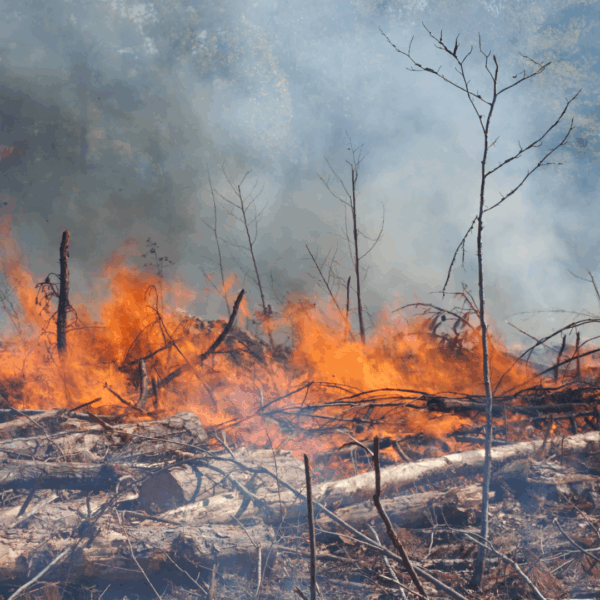Do controlled burns prevent wildfires? When used correctly, they can be one of the most effective tools in wildfire prevention.
Also known as prescribed fires, these carefully planned burns reduce hazardous vegetation, restore natural fire cycles, and can stop more destructive wildfires before they start. But like any tool, they must be used in the right context and under expert supervision.
Let’s break down how controlled burns work, when they’re used, and the role they play in broader fire prevention strategies.
What Is a Controlled Burn?
A controlled burn—or prescribed fire—is an intentionally ignited fire conducted under specific environmental conditions to manage vegetation, reduce fire hazards, or improve ecological health.
These burns are carried out by trained professionals following a detailed burn plan that considers wind, humidity, temperature, terrain, and fuel conditions. Before ignition, the team ensures safety measures are in place: firebreaks are prepared, backup crews are on standby, and emergency communication systems are ready.
Controlled burning is used in forests, grasslands, and even near urban areas, where overgrowth can pose a risk of wildfires.
How Do Controlled Burns Help Prevent Wildfires?
So, do controlled burns prevent wildfires? In many cases, yes. Here’s how:
- Fuel reduction: Fires need fuel—dead leaves, dry grass, overgrown brush. Controlled burns safely eliminate these combustible materials before they can feed an uncontrolled wildfire.
- Firebreak creation: When used strategically, prescribed fires can act as buffers that slow or stop wildfires by removing fuel along potential paths of spread.
- Ecosystem management: Some landscapes are fire-adapted and rely on low-intensity fires to maintain healthy soil, control invasive species, and promote the growth of native plants. Suppressing all fires can actually make future wildfires worse.
According to the National Interagency Fire Center (NIFC), prescribed burns are a critical tool in reducing the frequency and severity of large wildfires in fire-prone areas.
When and Where Are Controlled Burns Used?
Controlled burns are used across the U.S., especially in areas with seasonal fire risks. Western states, such as California, Arizona, and Oregon, conduct burns in forested regions, while states like Florida use them to manage grasslands and preserve natural ecosystems.
These burns are typically scheduled during cooler months or during times of low wind, when the risk of fire escape is low. In the U.S., prescribed burns must comply with state and local environmental and air quality regulations. Agencies like the U.S. Forest Service and state forestry departments often lead these efforts, sometimes in collaboration with private landowners.
What Are the Risks of Controlled Burning?
While controlled burns are generally safe when properly managed, they aren’t risk-free. Key concerns include:
- Escaped fires: If weather shifts unexpectedly or a plan isn’t followed, a burn can become uncontrolled. In 2022, a prescribed fire in New Mexico became the Hermit’s Peak Fire, burning over 300,000 acres.
- Smoke exposure: Even controlled smoke can affect nearby communities, triggering health warnings or reduced air quality.
- Public resistance: Misunderstandings about controlled burns may lead to community pushback or delays in project approval.
Because of these risks, burn managers follow strict protocols and use forecasting tools to limit the chance of unintended consequences.
Controlled Burns and the Bigger Picture of Fire Prevention
Controlled burning is just one piece of the wildfire prevention puzzle. Other strategies include:
- Vegetation thinning
- Fire-resistant landscaping
- Public education on fire safety
- Early detection systems
- Fire-resistant building materials
- Fire suppression system installation and maintenance
Used together, these approaches reduce wildfire risk, protect property, and support safer communities.
Fire Safety Requires Planning—Let DynaFire Be Your Partner
At DynaFire, we know that proactive fire prevention saves lives. While controlled burns are primarily a tool for land and forest management, commercial property owners and facility managers also have a role to play in reducing fire risk.
Our team designs, installs, and monitors commercial fire alarm systems, fire suppression systems, and 24/7 remote monitoring solutions. Whether you’re preparing for inspection or updating your fire protection system, DynaFire brings the experience and technology to help you stay ahead of risk.
Contact us today to schedule a fire safety consultation or learn more about long-term fire protection planning for your business.






